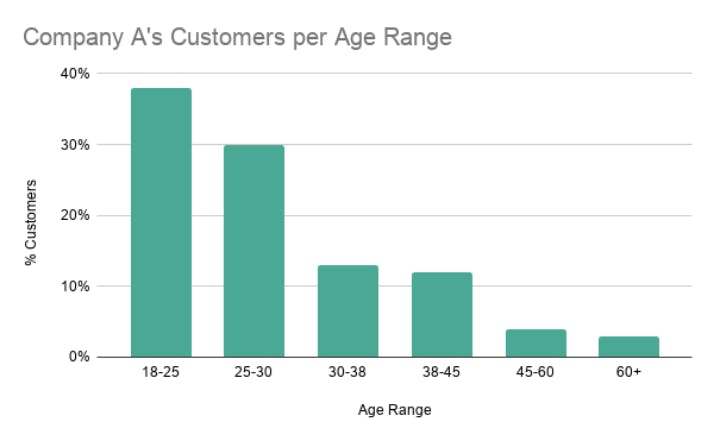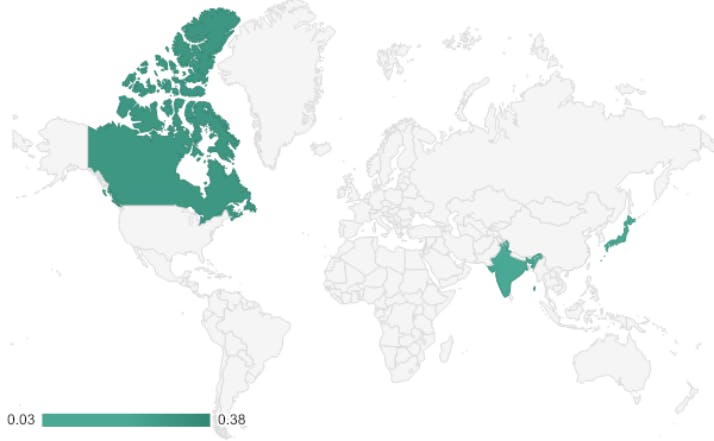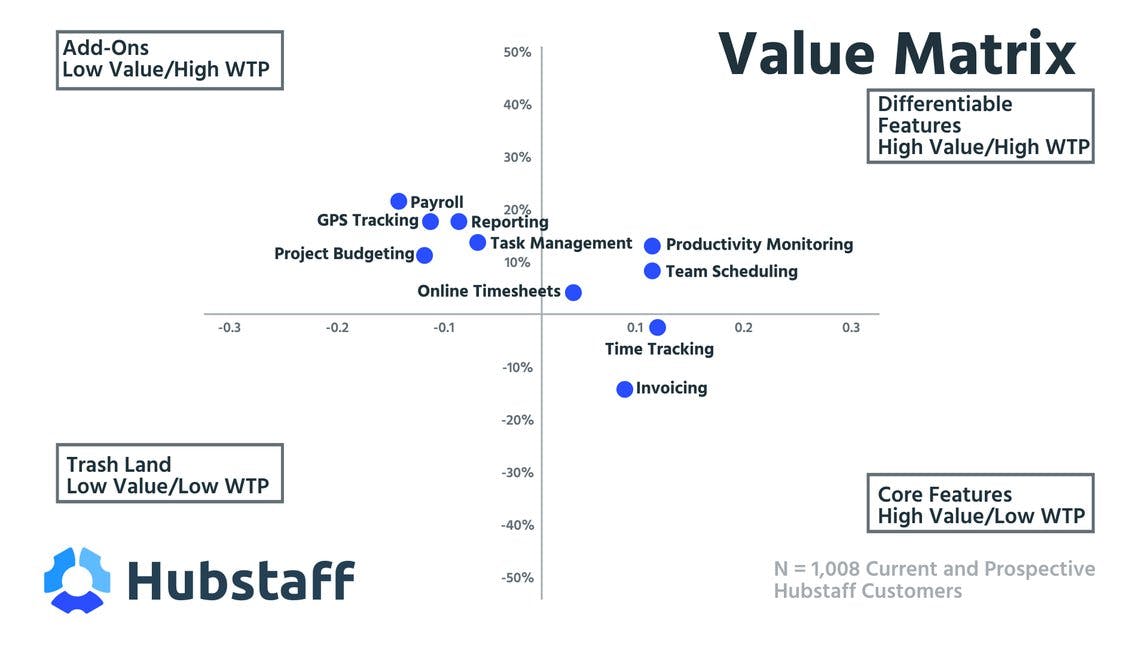Revenue optimization can significantly improve your business performance and profits. Explore three strategies to help you.
Revenue is good. Lots of revenue is great. Optimized revenue is better.
Because the world of e-commerce is so restless, as soon as your company finds itself bringing in steady revenue, the first question anyone will be asking is: How can we make this performance even better? The obvious answer is to find a way to make even more sales. The better answer, in fact, is to optimize the revenue you’re already bringing in.
Revenue optimization, though, is not as simple as flipping a switch. It requires that you pay careful attention to a variety of processes within your company and make the right changes and adjustments. It’s not a straightforward process, but follow these tips and you’ll be on your way to maximized revenue—and a very healthy bottom line.
What is revenue optimization?
Revenue optimization is a combination of pricing, demand, and marketing strategies used to maximize revenue growth. It involves taking a tactical, analytical approach to your pricing—requiring analysis of your price points, sales channels, and various other areas of your business—in order to maximize it.
Revenue optimization became popular when companies were able to build up large stores of key information on their customer base through CRMs and ERPs. Any interaction a customer or prospect has with your company or product leaves an information footprint, from vital information about the customer (name, location, occupation, etc.) to their behavior when using your product.
Assessed correctly, this information leads to a greater ability to understand your customers, telling you who is likely to need your product most and what they’re likely to spend on it. It leads, in other words, to the ability to maximize your revenue.
6 factors that affect revenue management
Revenue is affected by a whole bunch of factors. More or less every decision and process in your company will in some way lead back to revenue. Pricing is just the start.
Pricing decisions
More sales do not equal more revenue. This seems to go against retail wisdom, but the success of your revenue optimization strategy begins with you understanding that, sometimes, less is more.
Let’s take a look at Company A. It's looking to optimize its revenue and are thinking of different ways to go about it. It thinks of trying to optimize its revenue by dropping the price on its new smartphone accessory line. Retailers, who are always looking for the lowest prices, purchase the inventory. It would seem that Company A is on the fast track to optimized revenue.
However, shoppers look at the lower cost of Company A’s product and think that this reflects a lower quality. For that reason, they hesitate to buy products from the new line. In the end, Company A ends up making less money because of lost sales on lower-priced items.
Your pricing decisions need to be informed by factors more substantial than market clichés. Industry benchmarks and competitor analyses are always handy when assessing your price points, but the real key to ideal pricing for your product rests with the data you collect from your customers.
Data collection, segmentation, and analysis
Businesses that don't understand their customers aren't successful; the surest route to understanding is through collecting the right kind of data for later analysis. The data you focus on collecting for revenue optimization should center on what will help you with segmentation and forecasting.
Segmentation concerns dividing your customers into groups based on their shared attributes in order to better coordinate your marketing. Example market segments include the following:
- Age
- Gender
- Occupation
- Buying history & spending habits
- Geographical location
- History of product usage
Let’s go and visit Company A again. It might have a lot of young customers who live in coastal cities and tend to spend a lot of money on consumables every month. The company in the office next door, Company B, might have a considerably more dispersed customer base who are older and tend to make fewer, but more high-value, purchases per time period. The two companies will sell to their respective customer bases in very different ways.

Based on this data, Company A can easily get a measure of how its product’s appeal breaks down along age lines.

Subsequently, it can also see which territories its product is most popular in.
Forecasting involves using historical sales data, market trends, and industry statistics to estimate future sales levels. It allows you to determine how you need to manage your cash flow, workforce, and resources in order to continue growing as a company. It’s a fundamental part of basic financial management in SaaS, as well as important to revenue optimization.
Begin by predicting your achievable revenue, given the present state of your company’s resources.
Revenue streams
How do you make revenue? By selling to people, right? Well, there are lots of ways to sell to your customers, and each way constitutes a separate sales channel and a distinct revenue stream.
There is a wide variety of different potential revenue streams, including the following:
- Personal Selling: Establishing a network of customers using a sales force
- Direct Selling: Actively approaching prospects with your product via phone or email
- Outsourcing: Putting the burden of selling onto a third party
- Ecommerce: Going through a digital medium, such as a website, an app, or a social channel
- Reselling: Selling your products to platforms or individual merchants who then sell them
- White Labeling: Allowing resellers to brand your products and services themselves
It’s likely that your business will use several of them. Let’s go back to Company B: After segmentation, they’ve found out that its product is primarily used by 30 to 45-year-olds across the country, who have above-average incomes. Based on its target demographic, it's judged that it'll need to make full use of e-commerce channels, as well as a typical personal selling approach, in order to best reach high-quality prospects.
Influencing demand
You can’t create demand for your product out of thin air, but by assiduous use of the right techniques, you can influence and manipulate the degree of demand for your product. Influencing demand with the right approach to marketing is key in successful revenue optimization.
Your approach to marketing your product should be very broad in order to increase the likelihood of high-quality prospects becoming interested in you. There’s a host of options open to you:
Social media marketing offers a huge width of reach that no other channel can offer, while also giving you the opportunity to reach out to prospects with specific characteristics by using targeted advertising. User-generated content, high-end visuals that deliver a quirky or memorable depiction of your company’s values, cross-channel marketing, and a pinch of humor can all be harnessed to real effect on social media. You can even include the use of influencers if your field has them.
An email drip campaign or SMS marketing can be helpful in reaching customers less likely to engage with your website directly, as well as in reestablishing influence over existing customers whose engagement with your product is waning.
Content strategy, comprising everything from blog posts to podcasts to video series, is key for increasing demand for your product. Filling up your site with findable content that will help retain an audience, and showing off what your product can do, has a range of benefit, from higher domain authority and search engine visibility, to vastly increased conversion potential. It doesn't stop there, either.
Demand forecasting involves an assessment of the amount of future demand a product is likely to command, via the measurement of controllable and non-controllable factors, and anticipation of how these factors will change.
Channels that influence revenue optimization
In order to optimize your revenue, you need to individually optimize each of these business functions that contribute to your revenue. Turning your attention to the following channels will help you maximize revenue from all parts of your funnel.
Pricing optimization to increase willingness to pay
Pricing optimization is what ProfitWell does best, and happens when you align your pricing to show the value you provide to a customer. Do this and your products will flourish.
Pricing optimization involves using data from customers and the market to understand how you should most effectively be pricing your product, and it makes use of a variety of data types, including customer survey data, demographic and psychographic data, and historical data. The interaction between the inherent value of your product—what it can do, and how much better it can do what it does compared with its competitors—and your customers’ willingness to pay for all of this value is a delicate matrix.
Let's take Hubstaff as an example:

Hubstaff has an exceptional features read-out—enough low-value features to buoy its big hitters, and almost everything it offers has high WTP.
The key to price optimization—and, with it, one of the keys to revenue optimization is to price all of these features in accordance with both value and WTP. Figure out how your product’s features break down along these lines; hopefully, you won’t have any low-value and low-WTP functions. Like we said, ProfitWell does a mean line in pricing optimization.
Profit optimization to maximize sales efficiency
Profit optimization involves maximizing the possibility of your sales team getting and converting the best leads, leading to higher average profit per customer.
This is where the quality of your segmentation and data collection will really be put to the test. Sales teams should work with the data you have available in order to find customers with a certain profile. The most high-quality leads are those who:
Need your product. It seems simple, but many an optimization initiative gets beached thanks to sales reps targeting prospect who are theoretically perfect...aside from the fact that they don’t need your product.
Are likely to stay long term. Your best prospect will have a need that’s likely to last over a long period and that your product can satisfy. They may have a history of long-running subscriptions to their name.
Spend more. It’s impossible to optimize revenue without going for the connoisseur, and the ideal prospect is one who knows what they want and is willing to spend as necessary to get the best.
In accordance with the general quality-over-quantity approach, the surest route to profit optimization doesn’t involve stuffing your accounts with high-volume, quick-conversion leads; it involves getting a smaller number of dedicated, high-rolling customers and keeping them. Every customer you keep saves you money on acquisition costs.
Marketing optimization for better audience targeting
Marketing optimization comes after you’ve completed your pricing-and-profit-optimization steps. Now that you know how your pricing reflects your value, and the type of lead willing to pay it, you need to reach them.
We’ve spoken about the wide array of marketing options available to you. With your marketing strategy devised, you need to optimize your output for high-spending customers who truly value what your product brings to the table:
- Create a content series that ably demonstrates your product’s high-value features.
- Pilot a video series that discusses potential applications of the features in that bundle you have on offer.
- Find out what social channels your customers use—e.g. Are they low-engagement, Twitter-and-LinkedIn regulars? Do they prefer to use specialist insight networks like HackerNews? Then, put your content in front of them.
Inventory optimization
Inventory optimization presumes you do things the old-fashioned way: keeping and selling physical products. If that’s the case, there’s still plenty you can do to optimize your processes, from manufacturing to supply chain management.
Revenue optimization software
Way up top, we mentioned that revenue optimization as a practice has grown out of the availability of certain data types collected by commonly used software — and the right software is indeed essential to the process.
Analytics software
Even commanding the best data sets around, price and revenue optimization are two of the hardest facets of growth to get around. The different varieties of required data, the difficulty of creating truly accurate subscription reporting, and the resolution of the many smaller blockers to your revenue (things like credit card delinquency) can all make the effort of revenue optimization seem more effort than it’s worth.
Nevertheless, accurate subscription reporting and analytics, pricing strategy, and even churn analysis are all fundamental parts of nailing revenue optimization. There are few software solutions that keep all of these elements in one tidy package, eliminating the need for a maze of spreadsheeting, but we do know of one subscription reporting platform for CEOs to easily monitor all this data.
Enterprise resource planning (ERP)
Good ERP software will allow you to integrate the applications you use when managing your main business processes. It relegates a lot of tedious back-office functions, as well as some highly important ones, such as reporting, to automation.
ERP is fundamental to revenue optimization because it forms one half of the library of information required to make improved decisions on pricing, etc. It will track the sales and use of your product and provide uniform data to different departments in your company structure; given the degree to which you’ll need to synchronize those different teams in your structure for successful revenue optimization, this comes in handy.
ERP will integrate our final important revenue optimization software, CRM, as part of its overall bid to streamline your business processes.
Customer relationship management (CRM)
As its name would suggest, CRM mediates your sales reps’ interactions with both customers and prospects. It’s the cornerstone of almost any SaaS company’s tech stack, particularly in regard to sales.
It contains vital data on all customers in your database, stores correspondence between your reps and your customers, as well as detailing their patterns of interaction with your product and your company. It lets you keep track, in essence. And not only is this vital for maintaining stability in customer relationships, but it is also key for determining where you are failing to get the most available value from a customer relationship, showing you where optimization can be of use.
A well-deployed CRM can help you sketch out the terms for a deeper relationship with each customer, and it's this aiming for fewer, deeper relationships over many, flighty relationships that will result in successfully optimized revenue. You can use popular CRM software such as Hubspot or its alternatives based on your requirements.
The good news with revenue optimization is that all of the raw material you need to make it work will already be squirreled away somewhere in your database. It’s a case of dredging up the right stuff and making it work.
There’s no doubt that to make a successful go of optimizing your revenue, your methods of managing your approach to pricing, marketing, and inventory may have to shift. You may need to improve the software at your disposal; whatever the currency, you need to invest.
The benefits, though, can be vast: significantly improved e-commerce performance and profits.
Revenue Optimization FAQ
What does revenue management mean?
Revenue management is using analytics to forecast customer behavior trends in order to improve pricing to match market demand, and ultimately revenue growth. The main goal of revenue management is to sell the right product or feature at the right price in the specified market.
What are revenue optimization strategies?
There are 3 things that feed into revenue optimization: marketing automation, sales efficiency, and proper data collection. All of these things provide companies with the information required to track revenue performance and build out strategies to optimize revenue.
How does data quality affect revenue optimization?
Good data quality is key to optimizing revenue and making decisions that will drive business results. This means, consistently auditing data for duplicates, standardizing fields, and properly categorizing data into their appropriate segments. This will help with better analysis and the ability to forecast customer trends more accurately.
What are the main channels that help optimize revenue?
To optimize revenue, your business should focus on optimizing pricing, marketing campaigns, and sales effectiveness. This means, meeting customer demand with value-driven pricing, improving marketing and sales automation to convert as many qualified leads as possible, and selling to your highest-value leads.



